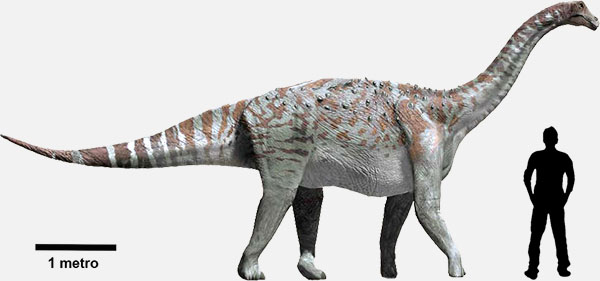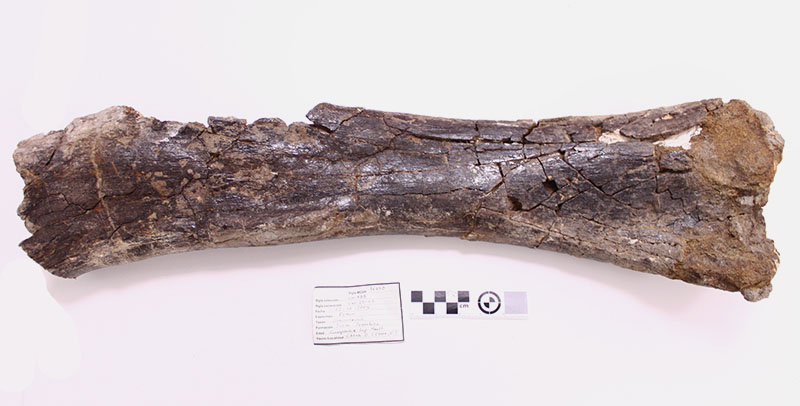Example of femur of adult titanosaurus dinosaur (Lirainosaurus astibiae). Vertebrate Paleontology Collection of the Museum of the University of Valencia of Natural History. Length 65 cm. MGUV 16450.
Lirainosaurus astibiae, a very special Valencian dinosaur
In the Museum of the University of Valencia of Natural History are found some fossil remains of a sauropod dinosaur of about 9 meters in length discovered in the town of Chera (Valencia), and whose bones date from the late Cretaceous, specifically from Campanian -Mastrichtian (72 million years old). The Valencian specimen was assigned to Lirainosaurus astibiae Sanz et al., 1999, a new species discovered in the Burgos municipality of Laño and which is part of the large group of titanosaurs, large sauropod dinosaurs with tens of meters in length and more than 20 tons of weight. The museum specimen appears to be considerably smaller than the average for all titanosaur species, and perhaps it could be a juvenile individual. The discovery of dinosaur fossils is always important from a scientific point of view, but subsequent studies in 2011 of the Chera specimen, provided surprising conclusions. The histology of the specimen's bones was studied from growth rings present in long bones such as the femur. The conclusion was clear, Lirainosaurus was not a juvenile individual, its bones were fully developed, estimating advanced ages in its development. The specimen, despite its short length compared to that of other groups of titanosaurs, was undoubtedly an elderly adult. Lirainosaurus was a dwarf sauropod, meaning this was approximately the maximum size it could reach. Currently, different species of mammals that live on islands have very small sizes compared to other continental species, this could be due to the so-called insular effect, where evolution favors smaller sizes, which brings many more biological advantages.
 References:
References:
Company J, Pereda-Suberbiola X, Ruiz-Omeñaca JI (2009) Nuevos restos fósiles del dinosaurio Lirainosaurus (Sauropoda, Titanosauria) en el Cretácico superior (Campaniano-Maastrichtiano) de la Península Ibérica. Ameghiniana 46:391–405
Company, J. Bone histology of the titanosaur Lirainosaurus astibiae (Dinosauria: Sauropoda) from the Latest Cretaceous of Spain. Naturwissenschaften 98, 67–78 (2011). https://doi.org/10.1007/s00114-010-0742-3


















